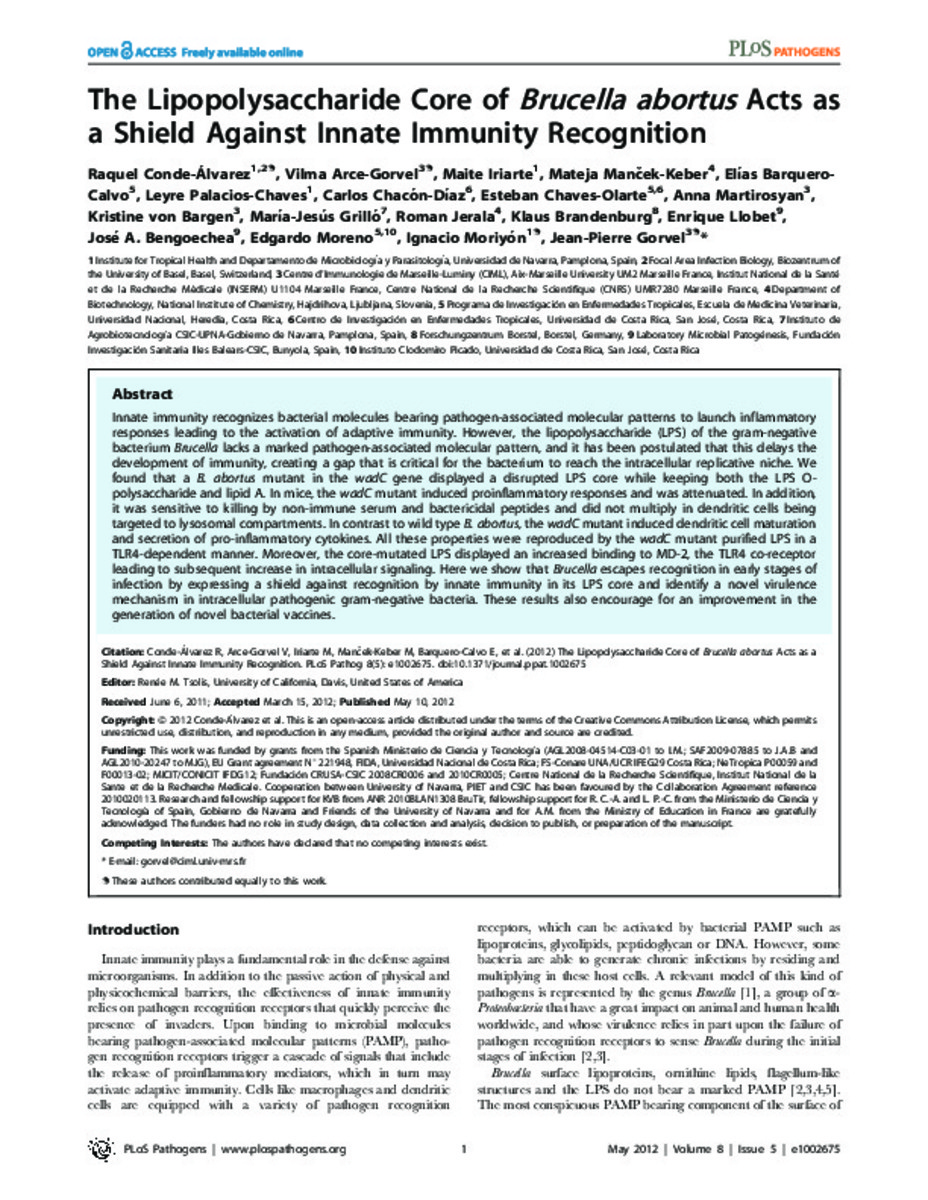The lipopolysaccharide core of Brucella abortus acts as a shield against innate immunity recognition
Keywords:
Brucella abortus
Immune evasion
Immunity
Lipopolysaccharides
Lysosomes
Publisher:
Public Library of Science
Citation:
Conde-Alvarez R, Arce-Gorvel V, Iriarte M, Mancek-Keber M, Barquero-Calvo E, Palacios-Chaves L, et al. The lipopolysaccharide core of Brucella abortus acts as a shield against innate immunity recognition. PLoS Pathog 2012;8(5):e1002675.
Statistics and impact
0 citas en

Items in Dadun are protected by copyright, with all rights reserved, unless otherwise indicated.








